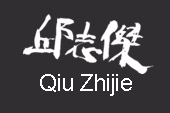 |
Qiu Zhijie |
|||||||
|
HOLLAND COTTER The Beijing-based artist Qiu Zhi-jie, a catalytic figure in Chinese vanguard art, made a memorable contribution to the Asia Society's exhibition "Inside Out: New Chinese Art" in 1997. with a conceptual piece titled "Writing 'The Orchid Pavilion' One Thousand Times." The "Preface to the Orchid Pavilion Collection." composed in the fourth century, is a touchstone of Chinese calligraphy, one that every practitioner Tries to master through repetition. Mr. Qiu copied It a thousand times 15etween 1990 to 1997, but always on the same sheet of paper. As the layered words dissolved into a solid field of black ink. a revered cultural icon was perpetuated and obliterated. In a further twist, the artist videotaped his writing sessions, reducing the ideal of spontaneous. emotion-generated virtuosity so essential to calligraphy's mystique to a permanent and prosaic record of labor-intensive effort. Much of the work in the Cohen show. which marks the artist's New York solo debut, similarly plays with and extends classical forms. Calligraphic hanging scrolls, traditionally vehicles for poetry. Carry outtakes from the Chinese dictionary. On other scrolls, pictorial components of Ink-and-brush landscapes--- trees. figures, pavilions C are detached from their original contexts. In a video. Mr. Qiu writes out Tang dynasty poems, but the tape is played backward so that he appears to be erasing them. (To in-sure that this "unwriting" moves in proper right-to-left sequence, he wrote the poems backward for the film, a virtuosic feat In itself.) Also on view are the traces of a piece the artist executed in the gallery during his recent New York stay. On a dally schedule, he rubbed together the engraved surfaces of two tombstones. one Chinese and more than l.000 years old. the other American from the early 2nth century (and never actually used).During weeks of work, the inscriptions were gradually obliterated and the identities they commemorated, separated by time and culture, mingled together as a pile of dust. At this point, Mr. Qiu is moving in many directions at once. (He has an interactive digital piece in the show ; last month he organized and participated in an exhibition of installation-based performance work in Beijing.) And because much of his art is language-based and there fore difficult for non-Chinese audiences to approach, it tends to look both low-key and diffuse. In fact,certain themes (cultural fragmentation, transiency) and attitudes (brash Zen-style wit, tempered nostalgia) are constants. And Mr. Qiu is only 32. There's still plenty of time for him to follow loose ends wherever they lead.
|